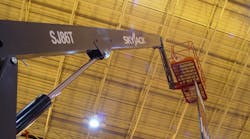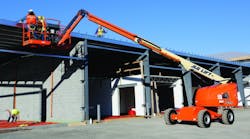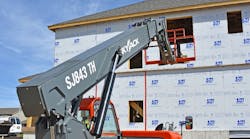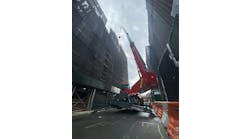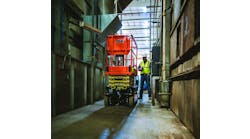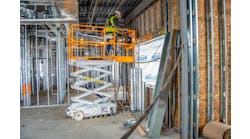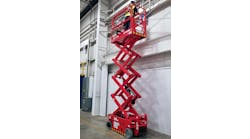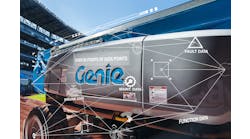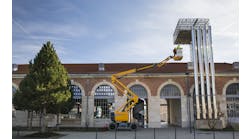Interview with Malcolm Early: New ANSI Standards Driving Change
In a recent interview with RER, Malcolm Early, vice president of marketing, Skyjack, discusses the wide-reaching effects the new ANSI standards will have on the industry.
RER: What have been your most recent technological developments on your equipment?
Early: That will be those encompassed in the launch of the SJ85 AJ. The SJ85 AJ, we combined an outstanding reach envelope with dual platform capacities of 750/500 pounds (340/227 kg) and two/three personal rating, setting the SJ85 AJ apart and making it the most efficient machine for operators looking to maximize productivity and jobsite performance.
The SJ85 AJ features a class-leading working height of 91 feet (27.73 m), horizontal outreach of 56 feet (17.07 m) and an up-and-over clearance of 34 feet (10.36 m).
What new technological developments are on the horizon for you?
Early: I would suggest the biggest talking point is ANSI. The American National Standards Institute (ANSI) is expected to update standards for access equipment design standards in late 2017. The A92.20 will replace the A92.5 and A92.6 standards and the term mobile elevating work platforms (MEWPs) will replace aerial work platforms (AWPs). To comply with the new standards, North American manufacturers are getting ready to produce machines that meet the new A92.20 standards. Five major changes are expected to affect the industry:
1. Load-sensing system requirements
2. New wind force rating
3. New stability testing
4. New railing height
5. New platform entries
Skyjack has taken the opportunity to address certain features that could be improved. The thought being that if ANSI means a cost up what can we do to re-balance the Return on Investment equation.
In general, what trends do you see coming up in aerial equipment?
Early: Again, the upcoming ANSI changes is the biggest trend in the industry, it’ll affect manufacturers, rental companies and end users.
One year after the new standard is published, manufacturers will stop producing machines to meet ANSI A92.5/A92.6 standard and produce to the new standard Existing machines in service remain approved for use and there is no need to update old machines to the new standard.
Outside of the changes mentioned above the largest issue is one of education. Skyjack aims to help rental companies inform their customers about the changes and the implications. So our white paper on the standard is freely available on our web site and we will supply instore point of sale items that explains the standards and implications
We would encourage rental companies to allocate adequate resources to respond to customer inquiries about the new ANSI standards.
What new safety developments and safeguards have you made on your equipment?
Early: To return to ANSI it brings some changes to testing and operation, and not everyone likes change….BUT ultimately the changes are designed with safety in mind and while it may be tempting to lay the woes of the industry at ANSI’s feet sometimes it is helpful to think about how it increases safe operation of access equipment.
Any new developments in training?
Early: We are focusing on training and educating our employees and customers about the upcoming ANSI changes. As I mentioned above, there will be five key changes that will affect the industry, and when it comes to training itself, the new ANSI standard is expected to provide flexibility. The A92.20 standard allows qualified operators to self-familiarize and recognizes online theory training for operators. Plus, unlike the current manual of responsibilities, which is divided into multiple machine-specific versions, the new ANSI standard has one single document that covers the responsibilities for all MEWPs.
In general, what are your expectations for the aerial market in the foreseeable future, in North America and internationally?
Early: At the time of writing the major North America companies have released positive results and just as importantly their view on the future is positive. Europe is undergoing growth at the minute as well. In summary I would offer a positive view over the next year or so, remembering that even if there is a flattening it’s at a generally high level.
